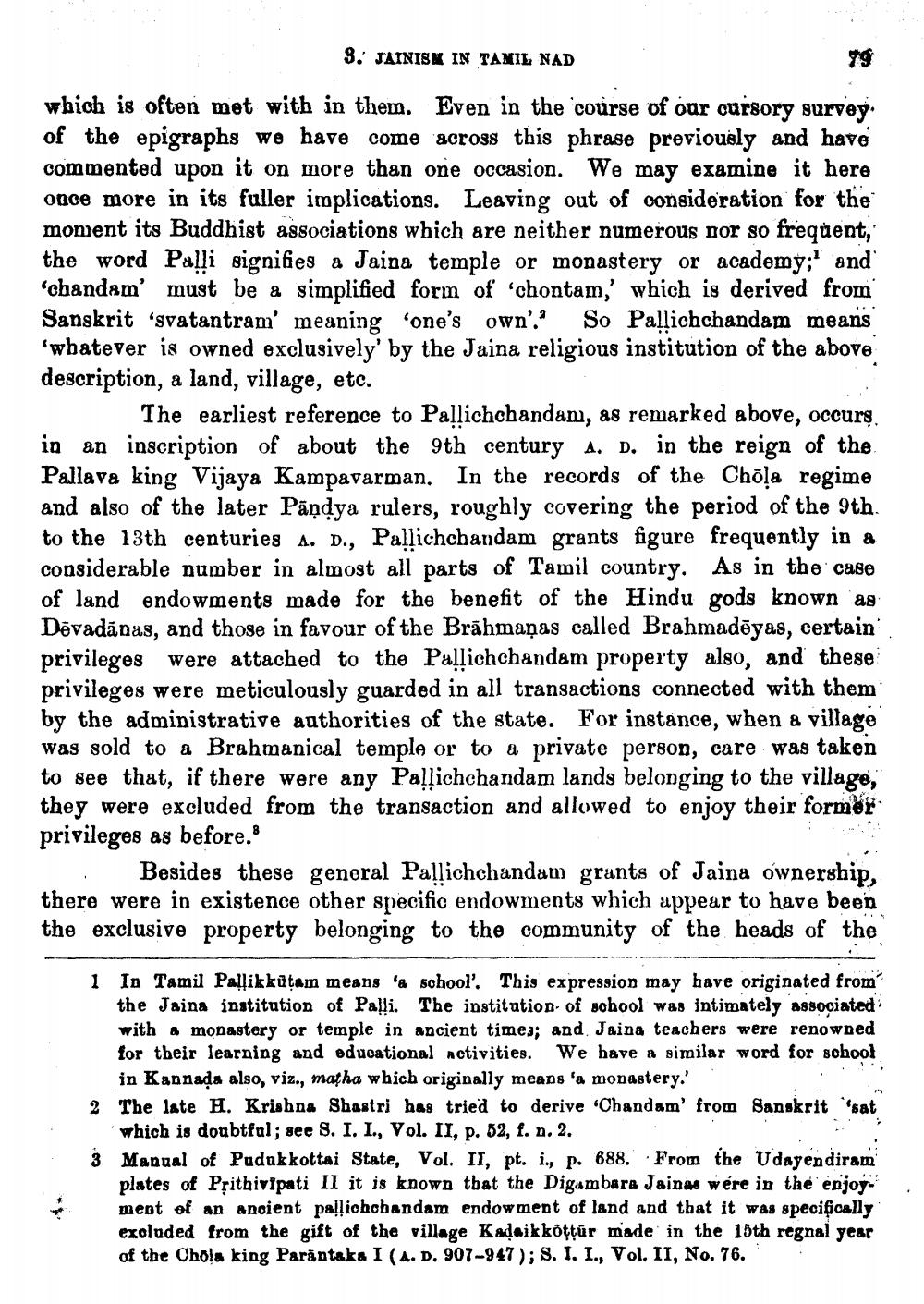________________
8. JAINISM IN TAMIL NAD
which is often met with in them. Even in the course of our cursory survey of the epigraphs we have come across this phrase previously and have commented upon it on more than one occasion. We may examine it here once more in its fuller implications. Leaving out of consideration for the moment its Buddhist associations which are neither numerous nor so freqüent, the word Palli signifies a Jaina temple or monastery or academy;" and 'chandam' must be a simplified form of 'chontam,' which is derived from Sanskrit 'svatantram' meaning 'one's own'.' So Pallichchandam means 'whatever is owned exclusively' by the Jaina religious institution of the above description, a land, village, etc.
The earliest reference to Pallichchandan, as remarked above, occurs in an inscription of about the 9th century A. D. in the reign of the Pallava king Vijaya Kampavarman. In the records of the Chola regime and also of the later Pāņdya rulers, roughly covering the period of the 9th. to the 13th centuries A. D., Pallichchandam grants figure frequently in a considerable number in almost all parts of Tamil country. As in the case of land endowments made for the benefit of the Hindu gods known as Dāvadānas, and those in favour of the Brāhmaṇas called Brahmadēgas, privileges were attached to the Pallichchandam property also, and these privileges were meticulously guarded in all transactions connected with them by the administrative authorities of the state. For instance, when a village was sold to a Brahmanical temple or to a private person, care was taken to see that, if there were any Pallichchandam lands belonging to the village, they were excluded from the transaction and allowed to enjoy their former privileges as before.
. Besides these general Pallichchandam grunts of Jaina ownership, there were in existence other specific endowments which appear to have been the exclusive property belonging to the community of the heads of the
1 In Tamil Pallikkūtam means 'e school'. This expression may have originated from
the Jaina institution of Palli. The institution of school was intimately associated with a monastery or temple in ancient times; and. Jaina teachers were renowned for their learning and educational activities. We have a similar word for school
in Kannada also, viz., matha which originally means 'a monastery.' 2 The late H. Krishna Shastri has tried to derive "Chandam' from Sanskrit ''sat
which is doubtful; see S. I. I, Vol. II, p. 52, f. n. 2. 3 Manual of Padukkottai State, Vol. II, pt. i., p. 688. From the Udayendiram
plates of Prithivipati II it is known that the Digumbara Jainas were in the enjoy. ment of an ancient pal!ichchandam endowment of land and that it was specifically exoluded from the gift of the village Kadaik kõttür made in the 15th regnal year of the Chola king Parantaka I (A. D. 907-947); S. I, I., Vol. II, No. 76.




